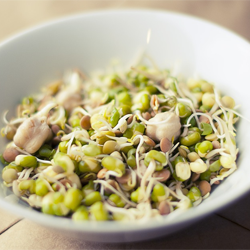
Ramadan is the time where there are long hours of fasting during the day time. Normally when we eat food the insulin secretion is elevated and this promotes the storage of glucose in liver and muscles in the form of glycogen. But during fasting times, the insulin levels in the blood are reduced and catecholamines and glucogen levels rise resulting in glycogen breakdown and gluconeogenesis takes place in the body. When there are long hours of fasting, glycogen stores are reduced. Since the insulin levels would be low in the body it eliminates fatty acid release from the adipose tissue and these fatty acids undergo oxidation to release ketones. These ketones are used by the tissue and muscles for energy and thus it spares glucose. In normal individuals, these are regulated by a delicate balance. But in diabetic patients, the insulin secretion is altered by the medications and the clinical conditions.
In patients with Type 1 diabetes, the glucogen secretion might not increase in response to hypoglycemia. In some patients with very poor levels of insulin, long hours of fasting can lead to excess glucagon break down which would increase the gluconeogenesis and ketogenesis and causes ketoacidosis and hypoglycemia. In Type 2 diabetic patients also the scenario might be the same but however ketoacidosis is uncommon. The hypoglycemic attack also depends on the person’s insulin resistance level or deficiency.
Limiting the fluid intake during the fast causes dehydration especially in hot humid weather conditions. There can be excessive fluid loss due to hyperglycemia resulting in fluid and electrolyte depletion. These can cause falls, injuries, syncope and bone fractures mainly due to low blood pressure caused by salt depletion. Due to this, the patient can go into a hypercoagulable state.
It is important to understand that fasting for patients with diabetes should be made with ample discussion with the physician. Patients who insist on taking fasting should be aware of the risks associated with it. Depending on the condition of the patient he/she might be at a higher or lower risk of complications. Care must be taken to individualize the management plan as it would differ from person to person. It is advisable to monitor the blood glucose levels more frequently during the day especially with Type 1 diabetes or insulin-dependent Type 2 diabetics also.
Nutrition

During Ramadan, the patients should try to maintain constant body weight. The usual format is that they ingest large amounts of carbohydrates, rich and fatty foods, especially during sunset meal. This should be replaced by a meal containing complex carbohydrates during predawn meal and a simple carbohydrate meal during sunset. The intake of fluid has to be increased during non-fasting hours. The pre-dawn meal has to be delayed as much as possible. Low glycemic index carbohydrates like brown rice, vegetables, oats, ragi, jowar, bajra, etc should be opted instead of high glycemic goods like white rice, potato, white bread. Go for protein-rich low-fat sources like nuts, lean meat like chicken, fish, eggs, pulses, dhals.
Avoid deep fried processed foods as these would increase your cholesterol levels. Opt for low-fat dairy products like skim milk, curds, soya milk, almond milk. Include lots of fiber in your diet by adding high fibrous vegetables like broccoli, Amarnath, bitter gourd, ladies finger, beans, sprouts. Include a lot of fresh salads in your meal where you use at least 5 different colour vegetables.


Avoid fruit juices as they are a concentrated source of fructose. Instead go for whole fruits like guava, apple, papaya, pears, strawberries, oranges, watermelon pieces. 2 – 3 fruits per day is permitted during Ramadan. Steamed foods are a better choice than deep-fried foods. Sweets may be popular dishes during Iftar but they are not good for your blood sugar levels. Go for smaller portions if you wish to consume these.
In patients with Type 2 diabetes who are well controlled with diet alone, then the risk of fasting is low. However, there is a risk of developing hyperglycemia after the predawn and sunset meals if the patient overeats. It is advisable to take 2 or 3 small meals during the non-fasting periods. Patients with Type 1 diabetes are at a higher risk of developing other complications mentioned. There is an equal risk tendency even for Type 2 diabetes who have uncontrolled levels and who are on insulin medication. It is advisable to get a medical assessment done within 1-2 months before Ramadan.
A total evaluation of the patient is necessary and specific medical advice should be taken. The patient and family should be aware of hyper and hypoglycemic symptoms. Necessary measures should be taken to correct the situation on time.
